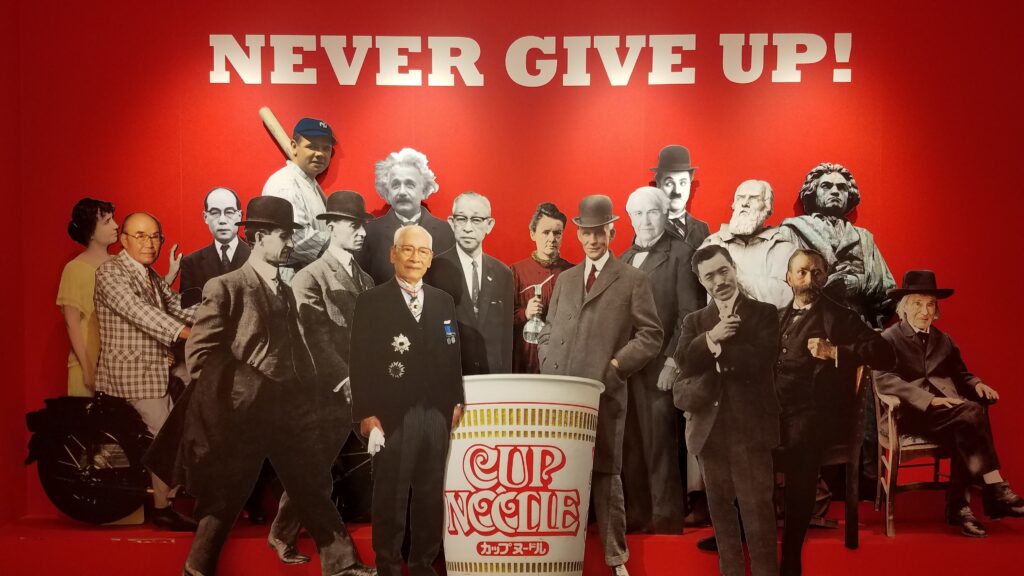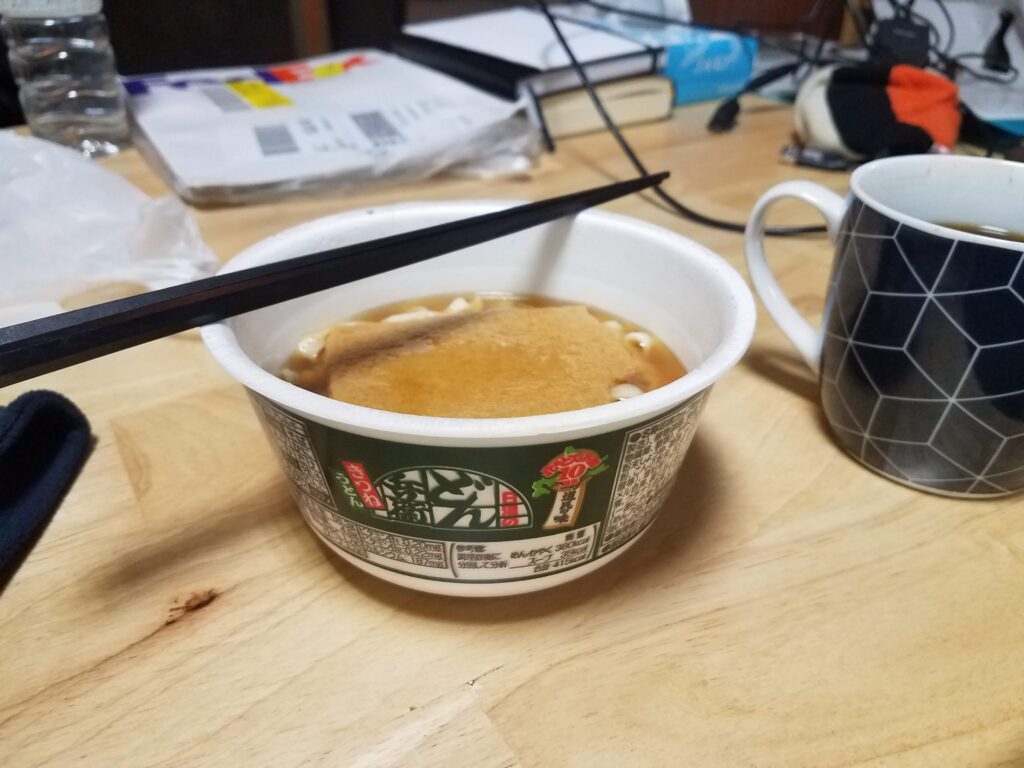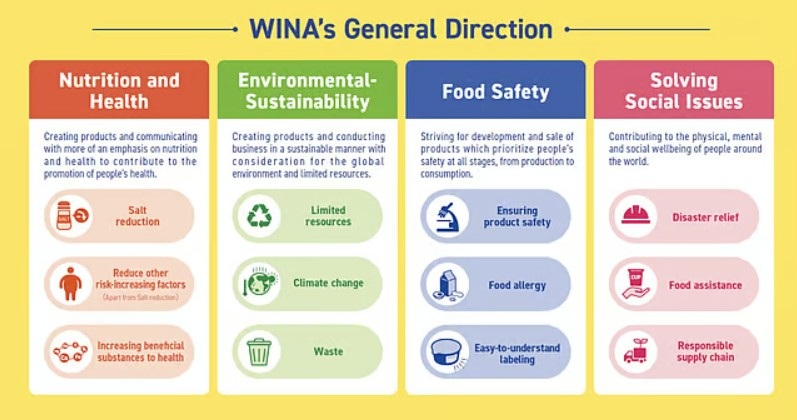“Peace will come to the world when the people have enough to eat.”
– Ando Momofuku
If you ask me what my favorite Japanese food is, I will say without a moment of hesitation: ramen. What was originally a Chinese dish adopted and adapted by the Japanese, it gained popularity as a low-cost, stomach-filling dish for shift workers. While it still is that, it is also an art form that family-run shops have honed over generations, with different regions throughout the country specializing in different styles. (For the record, Sapporo-style miso ramen with corn and butter is objectively the best, and I will brook no dissent on that subject.)
The perfected flavors of fresh noodles, vegetables, meat, and broth in a proudly, lovingly prepared bowl of Japanese ramen is a far cry from what most Americans think of when they hear the word. More often than not, the word “ramen” will conjure images of the freeze-dried bricks of noodles with a foil spice packet enclosed – something that sold for about $0.20 per serving when I was in college. While both the genuine article and the freeze-dried analog have played a significant role within Japan, arguably one has played a far more significant role globally, which I learned when my husband and I paid a visit to the Cup Noodle Museum in Yokohama. [1]
Top Ramen
After WWII, the Japanese Ministry of Health, in an effort to improve nutrition across the country, encouraged people to eat bread made from American wheat flour. Taiwanese-born inventor and businessman Ando Momofuku (whose name was then Go Pek-Hok) thought noodles would be more accessible to the population, but the government said that noodle companies were too small and unstable to support the needs of the country more broadly. [2] With that, Ando set to creating a flash-fried instant noodle that could be easily distributed, stored, and cooked.

He launched his flagship product Chikin Ramen in 1958 under his brand Nissin Foods, but it was initially seen as a luxury item with its ¥35 price tag (about $0.10 at the time, and about the equivalent of $6 today), approximately six times the cost of fresh noodles in the grocery store. Nevertheless, its popularity increased throughout Japan and nearby Asian countries in the coming years. Instant noodles gained traction in the West after the 1971 advent of Nissin’s Cup Noodles, which allowed the styrofoam packaging to double as a serving container. Prior to that, during the ‘60s, Ando had also founded the Instant Food Industry Association, which oversaw quality standards for an industry that was about to boom.
In 2020, instant noodles represented a $42B industry, overseen by the World Instant Noodles Association (WINA). [3] According to 2018 numbers, over 100 billion servings were eaten around the world, with China making up nearly 40% of global consumption, and with Indonesia, India, Japan, and Vietnam together making up another nearly 30%. [4] A Japanese poll run in 2000 marked instant noodles as the most important invention of the twentieth century, [5] but for as revolutionary and popular as they have become, that success is not without cost.
Where’s the Cost?
You may be familiar with the fact that instant noodles are not known for their nutritional value. A stereotypical favorite go-to dish for college students, they are typically high in carbohydrates, sodium, and fat while low in protein, vitamins, and minerals. And all joking aside, they do represent an affordable food option for people who are struggling financially, which feeds (no pun intended) the association between poverty and obesity. Lack of accessibility in food deserts leads to reliability on cheap, shelf-stable products. Years ago when I volunteered at a food bank, a lot of ramen noodles went out the door.

Screen shot credit: [6]
But instant ramen intake isn’t just informed by income levels (though that is often the case in the United States). South Korea has the highest per capita consumption of instant noodles in the world (more than once a week per person per year), and studies have noted a connection between that and cardiometabolic risk. [7] It’s important to note that epidemiologic studies note broad trends in the population and cannot speak to individual results. Ando-san, for example, claimed to eat Chikin Ramen almost every day since he invented it and lived to the age of 96 – but your individual mileage may vary.
Aside from the individual health risks posed by the ingredients of the food for the consumer, one of the common ingredients used to flash fry noodles is palm oil, which will need a dedicated blog post of its own one of these days. Palm oil is extremely cheap – which helps keep the costs down for products in which it is used – but its use has led to extensive deforestation and harm to wildlife, as well as labor rights abuses against workers. [8] This reminder is not intended to serve as a guilt trip for anyone who enjoys instant ramen but rather a note that if something is cheap for you (the consumer), someone or something else is likely bearing the cost.
Noodle Diplomacy
WINA was founded in 1997 with the goal of healthy development of the industry. In order to achieve that, the association identified five basic values to guide their work: delicious taste, safety, convenience, preservability, and affordability. Perhaps because of some of this criticism regarding health and environmental considerations, in 2018 WINA added two basic values to their original five: nutritiousness and eco-sustainability. The specifics of how the industry is planning on achieving these changes are less than clear. At their 11th industry summit in Manila last month, WINA representatives stated that “the industry’s commitments are poised to have far-reaching effects on consumer health and environmental conservation” [emphasis mine], seven years after adding those priorities to its core values. [9]

(c. February 2020 during a snowstorm in Hokkaido)
At this summit, governing members of WINA signed a declaration pledging concrete actions to improve nutrition and health, environmental sustainability, food safety, and solving social issues. [10] There is not much specific detail about future actions in the initial press coverage, but I will give Nissin Foods due credit for some progress in recent years. Specifically, Cup Noodles switched from their iconic polystyrene to a paper cup in 2023, which limits environmental impacts and health risks for consumers. [11] (I would bet that there’s still a thin layer of plastic coating on the inside of the paper cup, but it’s absolutely a step in the right direction from styrofoam.)
It also appears that certain members of WINA are involved in developing more nutritious recipes, particularly for noodles headed to military and humanitarian relief efforts, recognizing that instant noodles typically don’t typically represent a well-rounded diet for people who may be relying on them as a regular meal. [12] But aside from creating specially-formulated recipes for emergency situations, some WINA member organizations have participated in relief efforts around the world by donating hundreds of thousands of servings a year to areas hit by earthquakes, typhoons, hurricanes, floods, war (e.g. Ukraine), wildfires (e.g. Maui), and disease (e.g. COVID-19). [13]
What Price Progress?
I have mixed feelings about a technological innovation with a strong business model that contributes some ease to everyday life but also represents some longer-term health risks and environmental impacts. At the end of the day, WINA’s goals still involve increased consumption of their product, which is why I took descriptions of some of their activities with a sizable grain of sodium. That said, some of their more direct efforts are focused on disaster relief and preparedness in a disaster-prone country – and knowing what I know about Japan, that absolutely has value.

Image credit: [14]
One should maybe be a little skeptical of the shape of some of these programs: for instance, Nissin’s “Rolling Stockers” pantry prepping subscription program automatically sends you a set of noodles on a regular basis (ensuring that you have to eat the older ones to make room in your pantry), thus rendering an emergency staple more of a regular food item. On the other hand, they’ve hosted disaster preparedness training for elementary school kids (in Higashimatsushima, of all places! [15]) While they sealed the deal with training on how to collect and boil water for your Chikin Ramen, basics on first aid and wilderness survival are potentially life-saving skills in an earthquake and tsunami-prone area. [16]
As with pretty much everything I highlight on this blog, there are pros and cons, and my goal is to ensure that you, dear reader, have information (and perhaps even more questions) that can inform your own behavior. For my part, I really do like instant noodles and have a good bit of nostalgia for them, even though I haven’t had any in years (with the exception of the cup I made at the Cup Noodle Museum). There are some non-styrofoam, non-palm oil options available in the market now, which I also recognize will likely have a higher price point and be harder to find than some of the more conventional alternatives – both of which represent hurdles for many dealing with limited income and accessibility. In the end, I may just close this post by simply pointing out the value of moderation.
But I’d like to hear from you – what’s your favorite brand or flavor? What do you or don’t you like about instant noodles? What steps would you like to see from the industry?
Thanks for reading!
[1] https://www.cupnoodles-museum.jp/en/yokohama/
[2] https://en.wikipedia.org/wiki/Momofuku_Ando
[3] https://instantnoodles.org/
[4] https://en.wikipedia.org/wiki/Instant_noodles
[5] http://news.bbc.co.uk/2/hi/asia-pacific/1067506.stm
[6] https://www.imdb.com/title/tt0368008/
[7] https://pmc.ncbi.nlm.nih.gov/articles/PMC5449380/
[8] https://www.amnesty.org/en/latest/news/2016/11/key-facts-about-palm-oil/
[10] https://tribune.net.ph/2025/02/27/wina-unveils-manila-declaration-at-instant-noodles-summit
[13] https://instantnoodles.org/en/sustainability/emergency/
[14] https://tribune.net.ph/2025/02/27/wina-unveils-manila-declaration-at-instant-noodles-summit
[15] https://radicalmoderate.online/climate-lab-japan-insights-continued/
[16] https://www.nissin.com/en_jp/sustainability/feature/disaster-aid/activity/
0 Comments